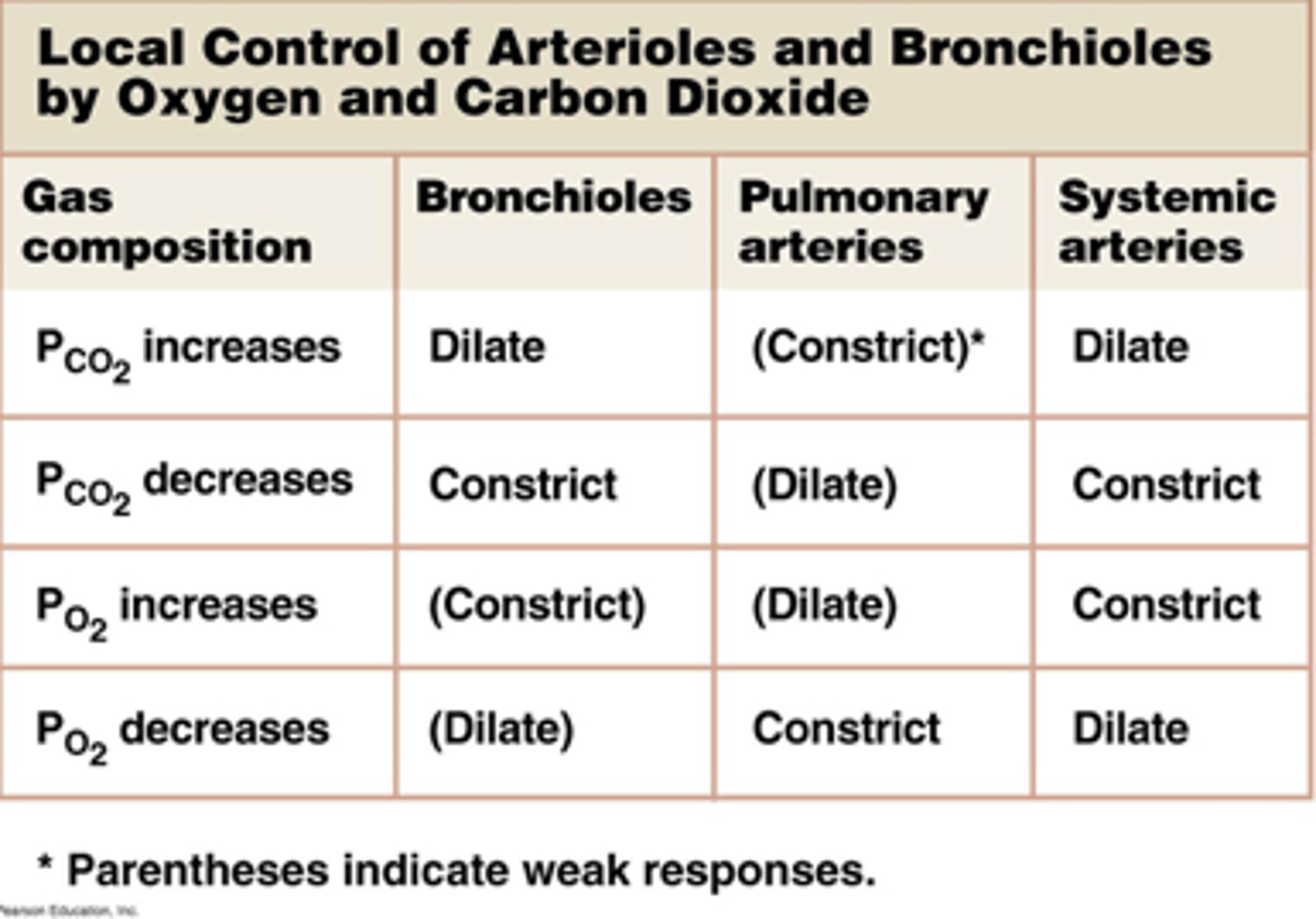APHY 164 - Respiratory System Control of Breathing
1/15
There's no tags or description
Looks like no tags are added yet.
Name | Mastery | Learn | Test | Matching | Spaced |
|---|
No study sessions yet.
16 Terms
ventilation-perfusion coupling
matching of alveolar ventilation with pulmonary blood perfusion, ability of bronchioles to regulate airflow and arterioles to regulate blood flow

medullary respiratory centers
located in the medulla oblongata, ventral respiratory group, and dorsal respiratory group
ventral respiratory group (VRG)
functions in forced breathing, stimulates the accessory muscles needed for forced inspiration and expiration
dorsal respiratory group (DRG)
where the primary respiratory pacemaker is found, stimulates the diaphragm and external intercostal muscles to contract resulting in inspiration, when activity in the DRG decreases the muscles relax resulting in expiration
pontine respiratory centers
located in the pons, include apneustic and pneumotaxic centers
apneustic center of pons
stimulates the DRG, controls the depth of breathing, prolongs inspiration, breathe slower and deeper
pneumotaxic center
inhibits inspiration (DRG), controls the respiratory rate, controls the DRG and VRG to create a smooth transition between inspiration and expiration
carbon dioxide levels
responsible for stimulating the respiratory centers to inhale and exhale
central chemoreceptors
receptors in the brain and medulla oblongata, monitor the pH of cerebrospinal fluid (CSF) to help regulate ventilation rate.
peripheral chemoreceptors
receptors in the carotid arteries and the aorta that monitor blood pH (pCO2 and O2) to help regulate ventilation rate
respiratory proprioceptors
monitor respiratory muscle stretch/position to alter depth of breathing
baroreceptor reflex
receptors located in aortic & carotid bodies, maintains normal BP, if BP increases reflex causes decrease in respiratory rate
Hering-Breuer reflex
also called the inflation reflex, protects the lungs from damage due to overinflation.
high altitude effects
a decrease in atmospheric pressure at high altitude leads to a decrease in the partial pressure of oxygen, hemoglobin saturation is lower at high altitudes resulting in lower blood oxygen levels
acute mountain sickness (AMS)
condition that occurs as result of acute exposure to high altitude due to a low partial pressure of oxygen - headache, dyspnea, nausea, vomiting, anorexia, insomnia
acclimatization to high altitude
decline in blood O2 stimulates the kidneys to produce more erythropoietin (EPO) -> increased RBC production -> more Hgb -> increased oxygen carrying capacity